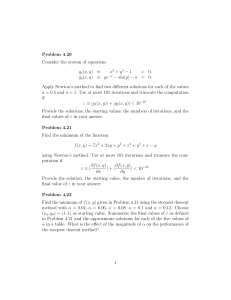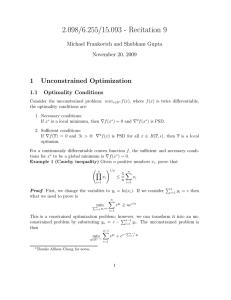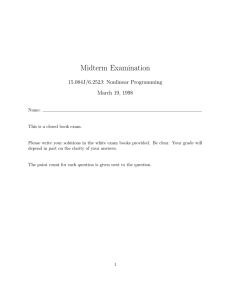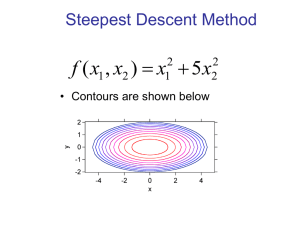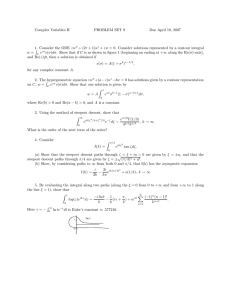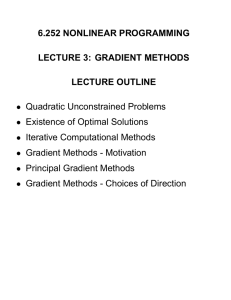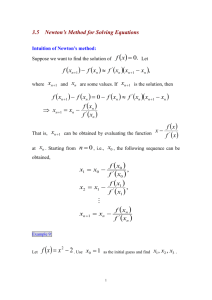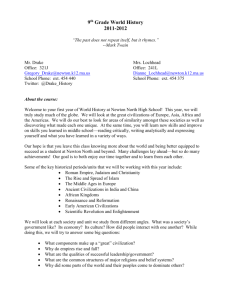List 4 - Rodrigo de Lamare`s website - PUC-Rio
advertisement
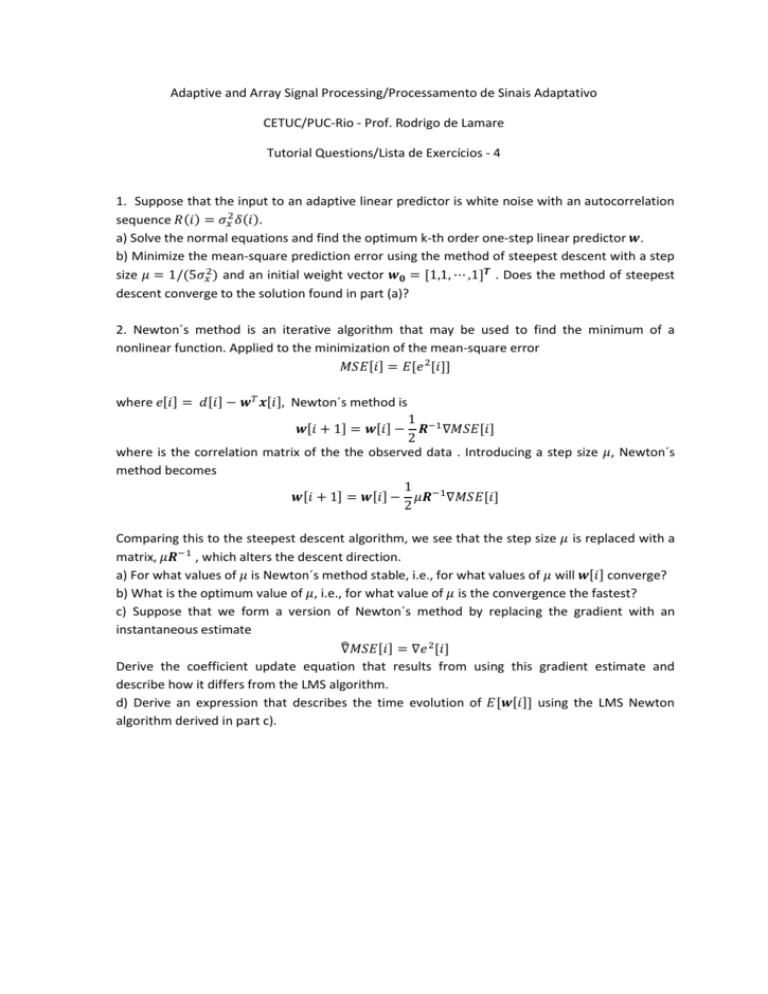
Adaptive and Array Signal Processing/Processamento de Sinais Adaptativo CETUC/PUC-Rio - Prof. Rodrigo de Lamare Tutorial Questions/Lista de Exercícios - 4 1. Suppose that the input to an adaptive linear predictor is white noise with an autocorrelation sequence 𝑅(𝑖) = 𝜎𝑥2 𝛿(𝑖). a) Solve the normal equations and find the optimum k-th order one-step linear predictor 𝒘. b) Minimize the mean-square prediction error using the method of steepest descent with a step size 𝜇 = 1/(5𝜎𝑥2 ) and an initial weight vector 𝒘𝟎 = [1,1, ⋯ ,1]𝑻 . Does the method of steepest descent converge to the solution found in part (a)? 2. Newton´s method is an iterative algorithm that may be used to find the minimum of a nonlinear function. Applied to the minimization of the mean-square error 𝑀𝑆𝐸[𝑖] = 𝐸[𝑒 2 [𝑖]] where 𝑒[𝑖] = 𝑑[𝑖] − 𝒘𝑇 𝒙[𝑖], Newton´s method is 1 𝒘[𝑖 + 1] = 𝒘[𝑖] − 𝑹−1 ∇𝑀𝑆𝐸[𝑖] 2 where is the correlation matrix of the the observed data . Introducing a step size 𝜇, Newton´s method becomes 1 𝒘[𝑖 + 1] = 𝒘[𝑖] − 𝜇𝑹−1 ∇𝑀𝑆𝐸[𝑖] 2 Comparing this to the steepest descent algorithm, we see that the step size 𝜇 is replaced with a matrix, 𝜇𝑹−1 , which alters the descent direction. a) For what values of 𝜇 is Newton´s method stable, i.e., for what values of 𝜇 will 𝒘[𝑖] converge? b) What is the optimum value of 𝜇, i.e., for what value of 𝜇 is the convergence the fastest? c) Suppose that we form a version of Newton´s method by replacing the gradient with an instantaneous estimate ̂𝑀𝑆𝐸[𝑖] = ∇𝑒 2 [𝑖] ∇ Derive the coefficient update equation that results from using this gradient estimate and describe how it differs from the LMS algorithm. d) Derive an expression that describes the time evolution of 𝐸[𝒘[𝑖]] using the LMS Newton algorithm derived in part c).
